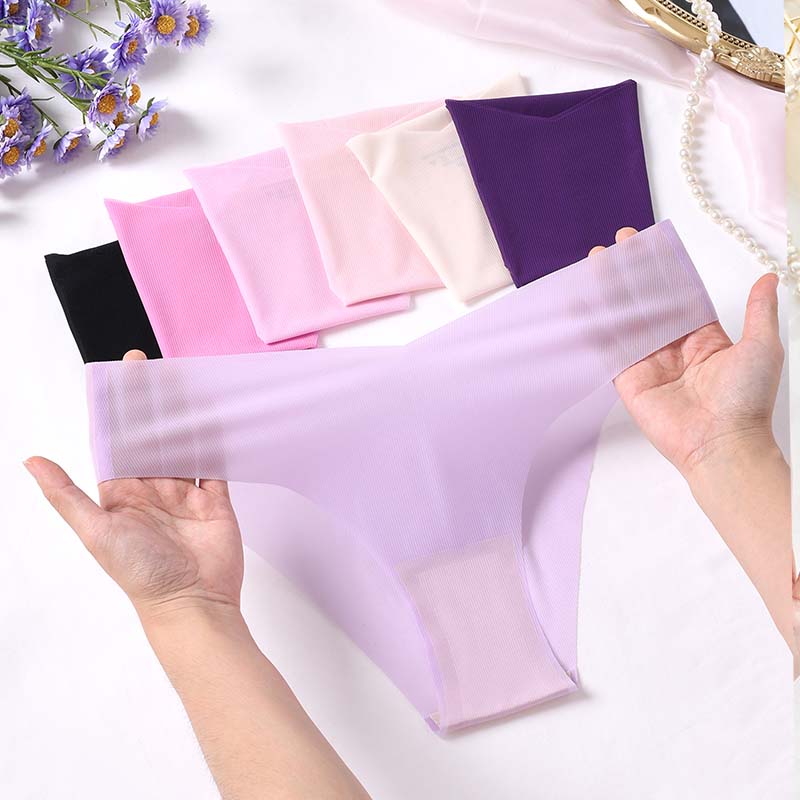-
Call Us : +86 13728718457
-
Email Us : Lexie@Sharicca.com
Call Us : +86 13728718457
Email Us : Lexie@Sharicca.com
A Deep Dive into Seamless Bonding Technologies, Consumer Demand, and Where This Trend is Headed
In the past decade, the women’s lingerie industry has shifted dramatically — from focusing on cleavage-enhancing, structured bras to prioritizing seamless, wire-free comfort. One buzzword continues to dominate: “second skin”. Whether it’s laser-cut panties or trackless underwear, seamless bras or high quality Jelly bonding bra, or even seamless period underwear, consumers are increasingly drawn to underwear that feels invisible and effortless.
But how are these garments actually made? What technologies lie behind this “no-feel” sensation? And are these innovations truly functional — or are we just following a temporary aesthetic trend?
1. Why "Second Skin" Is in High Demand:
A Consumer-Driven Shift in Comfort, Aesthetics, and Lifestyle
Multiple market forces are driving the rapid growth of seamless and bonded lingerie:

Comfort First: Consumers today spend long hours sitting, commuting, working, or moving. A garment that doesn’t pinch, roll, or dig in is no longer optional — it's expected.
No-Show Functionality: Thin dresses, yoga pants, and business wear require underwear that leaves no VPL underwear.
Skin Health Awareness: Skin-sensitive customers, especially Gen Z and Millennials, are looking for irritation-free solutions with smooth interiors and breathable fabrics.
Minimalist Aesthetics: The demand for clean silhouettes and reduced construction aligns with fashion’s larger trend toward “quiet luxury.”
The global seamless underwear market is projected to grow at over 7% CAGR, with North America, Japan, and Southeast Asia leading demand for bonded, high-comfort designs.
2. Inside the Technology: How “No-Feel” Lingerie Is Actually Made
Creating truly seamless, second-skin underwear isn’t about removing seams — it’s about integrating new fabrication, bonding, and molding methods. Here's how the industry is doing it:

A. Seamless Circular Knitting
Used in: seamless panties, sports bras, basic bonded underwear
Method: Tubular knitting via circular machines (e.g. Santoni) eliminates side seams and creates a one-piece body.
Pros:
Limitations:
B. Laser Cutting + Bonding (Heat-Sealed Assembly)
Used in: laser-edge panties, molded bras, seamless period panties
Method: Precision laser cuts the fabric; bonding tapes or heat-activated films fuse panels under high-pressure heat presses.
Pros:
Limitations:
C. Jelly Glue Bras (TPU Bonded Support)
Used in: wire-free bras for light to medium support
Method: A TPU “jelly” strip is embedded within the lower cup or wing to mimic the structure of a wire, providing flexible shaping.
Pros:
Limitations:
D. Bonded Period Underwear (Triple-Layer Composite Design)
Used in the leak-proof period panties for day/night use or activewear
Method: Moisture-wicking, absorbent, and waterproof layers are laminated together using heat and pressure. The leg and waist areas are laser-cut and sealed for edge comfort.
Pros:
Limitations:
3. Trend vs. Reality: Are We at the End or Just the Beginning?
While second-skin lingerie feels like a breakthrough, it’s important to acknowledge its shortcomings as well as its opportunities for innovation:
Current Challenges:
Durability: Heat-pressed adhesives can fail after 30–50 washes without proper material testing.
Fit Precision: Lack of seams limits structural adjustments for different body types.
Cost: Advanced equipment, molds, and bonding films add production complexity and price.
Environmental Tradeoffs: Many adhesive layers are not biodegradable and pose recycling challenges.
4. What’s Next: The Future of Smart, Ergonomic Lingerie
The next generation of bonded and seamless lingerie must balance comfort, performance, and responsibility. Here's where innovation is heading:
A. Hybrid Bonding Techniques
Mixing laser bonding with targeted stitching to reinforce stress zones, improve support, and increase lifespan.
B. Green Adhesive Development
Plant-based or water-soluble bonding films that retain strength while enabling end-of-life recycling.
C. AI-Aided Fit Modeling
Using body scan data to personalize molding and adhesive placement across different body types and markets (e.g., Western vs. Asian fit).
D. Advanced Functional Fabrics
Combining antibacterial, moisture-wicking, and stretch fabrics into bonded systems for premium comfort and wellness benefits.
Conclusion:
“Second Skin” lingerie isn't the final product — it's a design philosophy. As bonded and seamless technologies evolve, the industry is moving closer to underwear that not only disappears under clothing but also adapts intelligently to our body and lifestyle.
Manufacturers, designers, and brand builders who embrace both the technical challenges and the human-centered goals of “no-feel” lingerie will be the ones shaping the next generation of intimatewear.
📩 Let’s Talk – Start Your Next Lingerie Project with Us
At ChuangRong Apparel, we specialize in the development and production of seamless, bonded, and functional lingerie for global brands. Whether you're exploring TPU jelly bras, bonded period underwear, or laser-cut seamless sets, we offer full OEM & ODM support — from prototyping to mass production.
📍 Factory Location: Gurao Town, Guangdong, China
🏭 Founded: 2008 | 500+ employees | 30M annual capacity
🧵 Certifications: OEKO-TEX, GRS, GOTS, BSCI, ISO9001
🧑🎨 Services: R&D, sampling, mold development, flexible MOQ, private labeling
🔗 Contact Us Today
📧 Email: Lexie@Sharicca.com